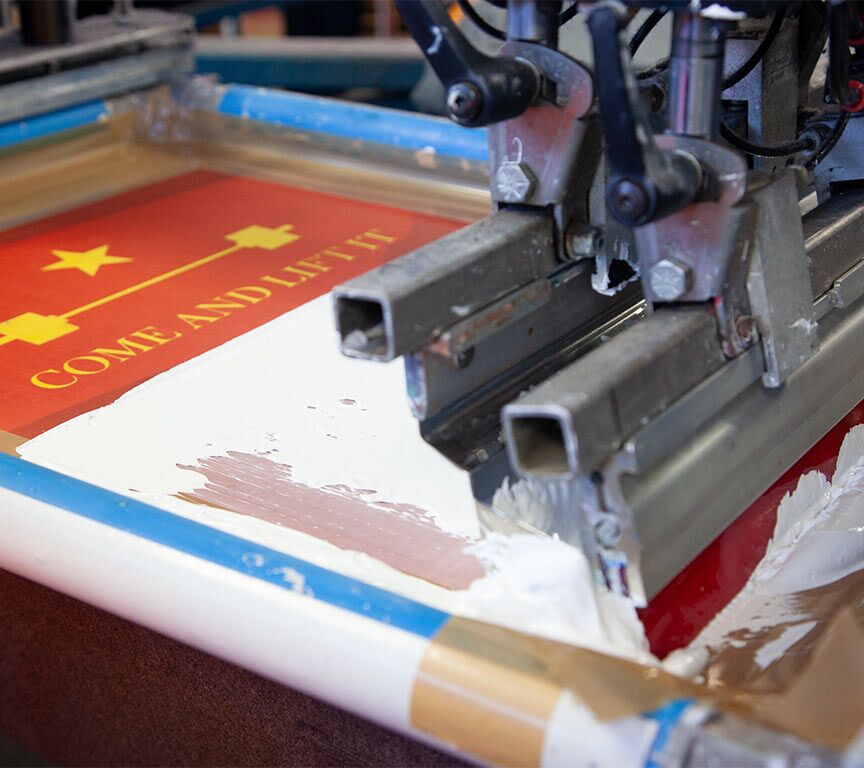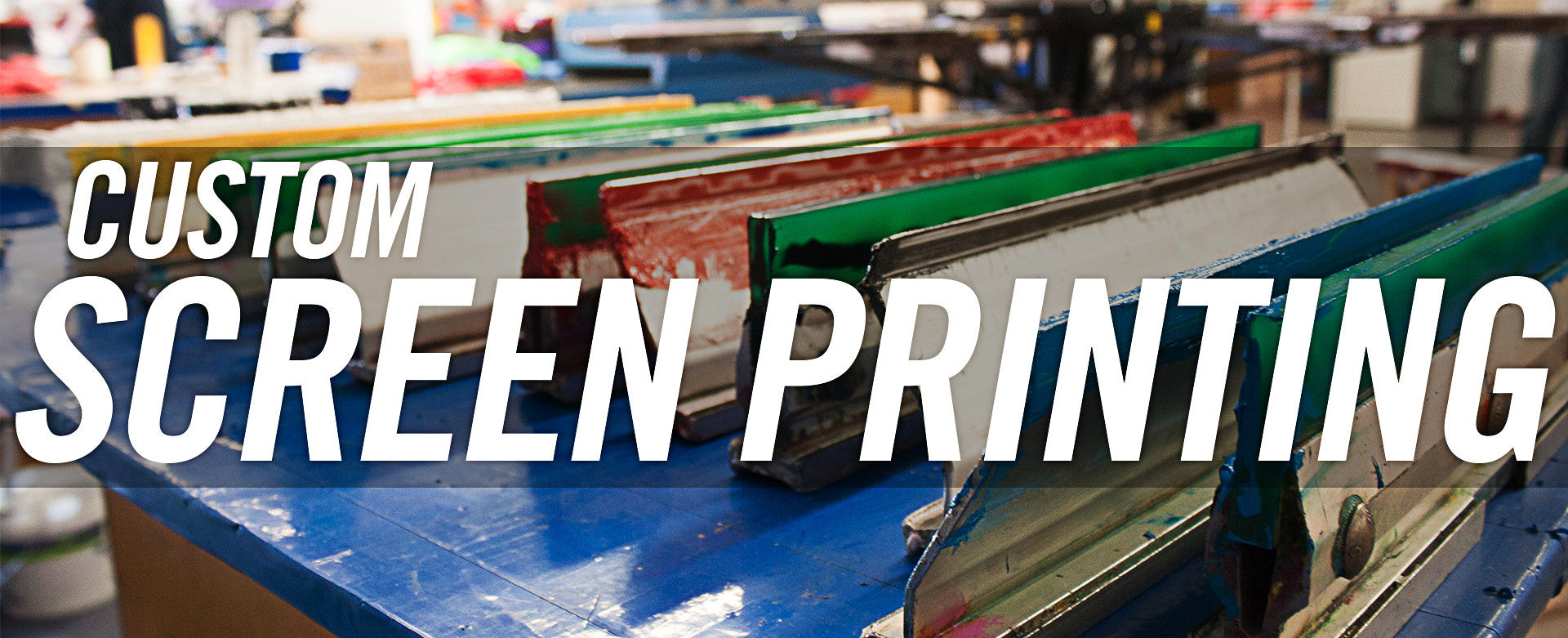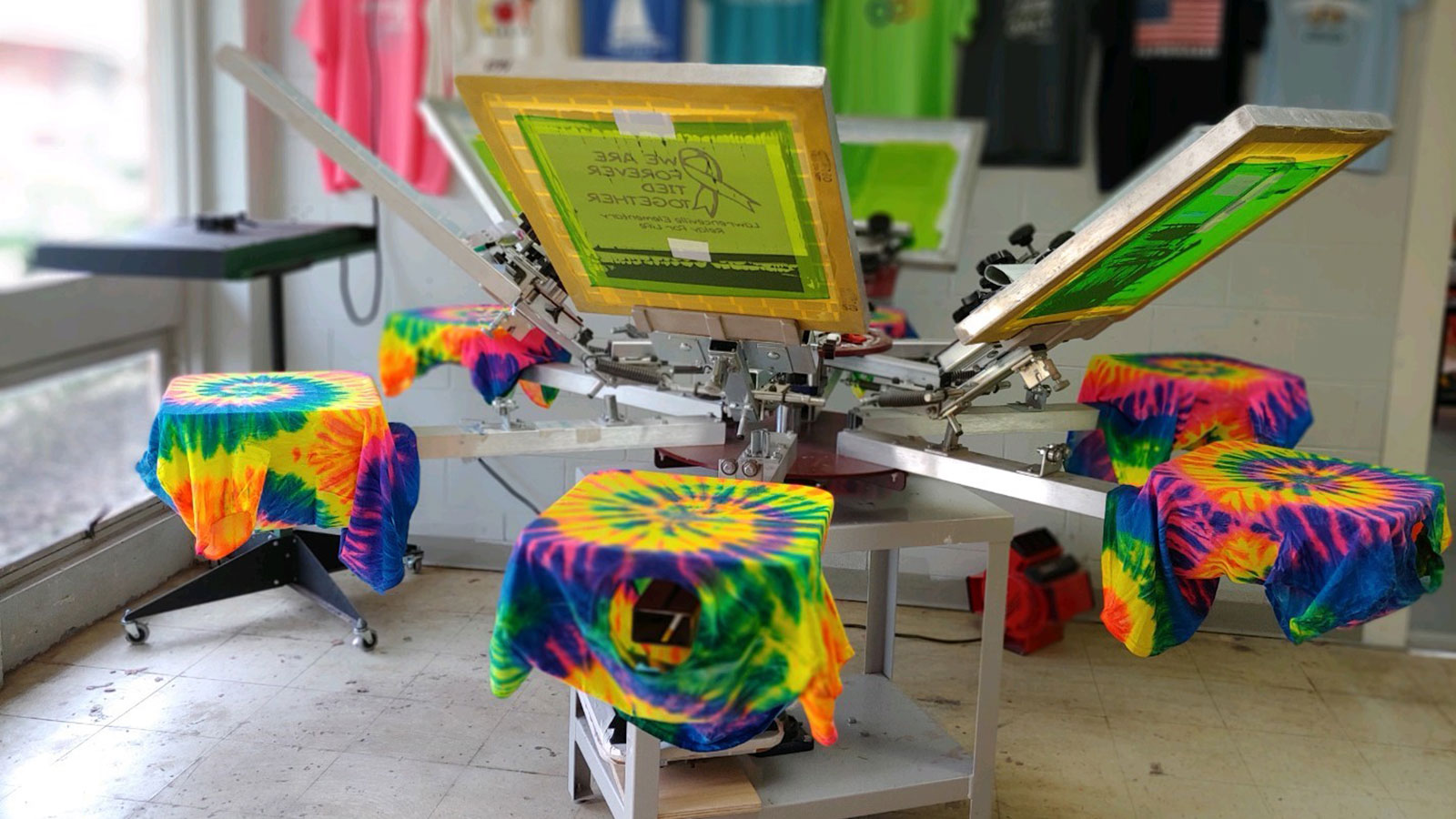Professional Screen Printing Kit for Custom Apparel
Wiki Article
Display Printing Uncovered: Whatever You Required to Understand About T-Shirt and Garment Printing Techniques
If you've ever wondered just how those vibrant layouts finish up on your favored t-shirts, you remain in the ideal place. Screen printing is a fascinating technique that incorporates art with technique, supplying limitless opportunities for creative thinking. Understanding the fundamentals, from equipment to ink choices, can considerably influence your outcomes. All set to discover the essential aspects that make screen printing an art kind? Let's uncover the information that can raise your tasks.
The Basics of Screen Printing: How It Works
When you plunge right into screen printing, you'll uncover it's both a scientific research and an art. At its core, display printing involves developing a stencil, or screen, that enables ink to travel through just in specific locations (screen printing kit). You start by choosing your layout and preparing your display with a light-sensitive emulsion. Once you subject this emulsion to light, it solidifies, leaving your style as an unfavorable area.Setting the screen over the textile, then use a squeegee to push ink through the display onto the garment. Each step is crucial, and understanding them will certainly elevate your screen printing skills, changing basic garments into one-of-a-kind, meaningful pieces.
Types of Display Printing Strategies
As soon as you realize the essentials of display printing, it's time to explore the different techniques that can elevate your styles. One prominent technique is traditional display printing, where ink is pressed through a stenciled screen.If you're going for great details, consider discharge printing. This method gets rid of dye from the textile, leaving a soft, classic appearance. One more option is plastisol printing, recognized for its sturdiness and brilliant shades, making it a favorite for several brands. Lastly, try out halftone printing to produce slope effects and intricate layouts. Each strategy has its one-of-a-kind charm, so don't think twice to try them bent on discover what fits your style best!
Essential Tools for Screen Printing
To attain magnificent results in display printing, having the best equipment is essential. You'll require a tough screen printing framework, which holds the mesh that transfers your layout onto the garment. Next, invest in premium mops; these are vital for using ink evenly across the display.Picking the Right Inks and Products
When picking inks and products for screen printing, you require to take into consideration the kind of ink that works best for your job. Think about fabric compatibility to guarantee your designs look last and fantastic long. Likewise, explore eco-friendly ink options to make your printing procedure a lot more lasting.Sorts Of Display Inks
Selecting the ideal screen ink is crucial for accomplishing vivid, long lasting prints that fulfill your task's needs. There are several kinds of screen inks to examine. Plastisol ink is preferred for its flexibility and ease of usage, giving outstanding shade opacity on dark textiles. Water-based ink, on the other hand, provides a softer feeling and is green, making it perfect for those aiming to lessen their ecological effect. Discharge inks get rid of dye from the fabric, leading to a soft, classic look but require particular handling. Finally, specialty inks, such as metallic or glow-in-the-dark, can include one-of-a-kind impacts to your designs. Assess your project requirements and choose the ink that lines up ideal with your desired end result.
Textile Compatibility Factors To Consider
Comprehending textile compatibility is vital for attaining premium display prints, specifically because different products respond distinctly to different inks. Constantly examine your inks on sample material to ensure they adhere properly and maintain color honesty. In addition, keep in mind that fabric weight and appearance can influence the last result, so selecting the appropriate ink and product combo is crucial for your project's success.Eco-Friendly Ink Options
Green inks are becoming a prominent option for display printers that desire to lessen their environmental influence while preserving quality. When picking inks, take into consideration water-based inks, which are less dangerous and easier to clean up contrasted to typical solvents.In addition, try to find inks made from renewable energies, such as soy or vegetable-based choices. By picking the best inks and materials, you'll not only develop magnificent styles but also contribute to a more sustainable printing process. Make the button, and your prints will reflect your dedication to the atmosphere!
Preparing Your Style for Display Printing

File Layout Requirements
To ensure you can look here your layout looks vibrant and sharp on fabric, you'll require to pay close interest to submit format needs for screen printing. Begin with vector documents like AI or EPS, as they can be scaled without shedding high quality. If you use raster photos, opt for high-resolution documents, such as TIFF or PNG, preferably at 300 DPI. Prevent using JPEGs, as they can shed quality when resized. Additionally, make certain your layout has a clear background to prevent undesirable white sides on your prints. Keep color modes in mind; CMYK is basic for screen printing, so transform your RGB creates appropriately - screen printing kit. By following these standards, you'll set your artwork up for an effective print.Color Separation Methods
Shade separation is a vital action in preparing your layout for display printing, and grasping it can significantly improve your print high quality. You'll need to damage your layout right into specific colors, as each color needs a separate screen throughout printing. Beginning by determining all the colors in your layout and develop layers each. You can use software like Adobe Photoshop or Illustrator to separate and different colors properly. Be particular to conserve each layer as a different file, normally in a style like TIFF or PSD. This accuracy not only guarantees exact shade depiction however likewise enhances the printing process. By taking note of color splitting up, you'll attain professional and lively cause your screen-printed garments.Resolution and Dimension
Achieving the ideal outcomes in display printing starts with ensuring your layout has the best resolution and dimension. Preferably, your art work needs to be at least 300 DPI (dots per inch) for sharp, clear prints. If straight from the source you utilize reduced resolution, your end product could look pixelated and less than professional.When it pertains to dimension, consider the measurements of your print location. Design your art work to match the last print size, ideally creating it in the actual measurements you'll be printing. In this manner, you'll stay clear of any unforeseen scaling concerns.
Always examine your style in both vector and raster layouts. Vector graphics can be scaled without shedding quality, making them suitable for screen printing. Preparing properly will assure your layout looks remarkable on every garment!
Step-by-Step Display Printing Refine
Display printing is a dynamic process that allows you to develop dynamic layouts on numerous surfaces. To get started, you'll need a screen, emulsion, and your chosen ink.After rinsing the unexposed emulsion, your screen prepares. Establish it up on your printing surface area and straighten your garment underneath it. Put ink onto the display and utilize a squeegee to press the ink with the pattern onto the textile. Raise the screen thoroughly and let the print completely dry. Ultimately, cure the ink utilizing warm to ensure toughness. That's it! You've successfully screen printed your design.
Tips for Successful Screen Printing Projects
While you're diving into your display printing jobs, keep in mind that preparation is essential to success. Begin by collecting all your materials-- inks, garments, squeegees, and screens. A clean office assists protect against unwanted errors, so tidy up prior to you start.Next, verify your artwork is high-resolution and appropriately sized for your garment. Examine your screen for proper exposure and tidy it extensively to avoid spots. When blending your inks, adhere to the supplier's guidelines to accomplish the appropriate consistency.
Throughout printing, apply even pressure with your squeegee for consistent outcomes. Don't hurry; take your time to confirm each print fulfills your standards. After printing, allow your garments dry totally prior to handling or packaging them.
Finally, constantly maintain an example of your help future recommendation. In this manner, you can evaluate your development and boost your techniques with time. Happy printing!

Often Asked Questions
How much time Does It Require To Establish a Display Printing Work?
Establishing a screen printing task generally takes around half an hour to an hour. You'll prepare the displays, mix inks, and change journalism. The moment differs based upon intricacy and experience, so stay organized!Can I Print on Various Material Keys In Making Use Of the Very Same Method?
Yes, you can publish on different material types using the same method, however you'll require to adjust your settings and inks. Some textiles soak up ink in a different way, so trying out guarantees the most effective outcomes for each product.What Prevail Mistakes to Avoid in Screen Printing?
When screen printing, prevent common errors like using the wrong ink, disregarding appropriate direct exposure times, or missing pre-press checks. Constantly check your configuration and maintain clean displays to assure top quality outcomes each time.Just How Can I Correctly Clean and Maintain My Display Printing Devices?
To properly tidy and preserve your screen printing tools, you should regularly clean displays with appropriate solvents, inspect squeegees for wear, and assure all tools are kept dust-free and completely dry. Consistency improves and prevents expensive fixings efficiency.Is Screen Printing Eco-friendly Compared to Other Techniques?
Screen printing can be more eco-friendly than various other approaches, specifically if you make use of eco-conscious products and water-based inks. By choosing lasting products and techniques, you decrease waste and minimize your influence on the planet.Screen Printing Uncovered: Whatever You Required to Know About T-Shirt and Garment Printing Strategies
At its core, display look what i found printing includes creating a pattern, or screen, that enables ink to pass with just in particular locations. Position the display over the material, then make use of a squeegee to press ink with the screen onto the garment. One popular approach is typical screen printing, where ink is pushed with a stenciled screen.When selecting inks and products for screen printing, you need to take right into account the kind of ink that functions finest for your project.
Report this wiki page